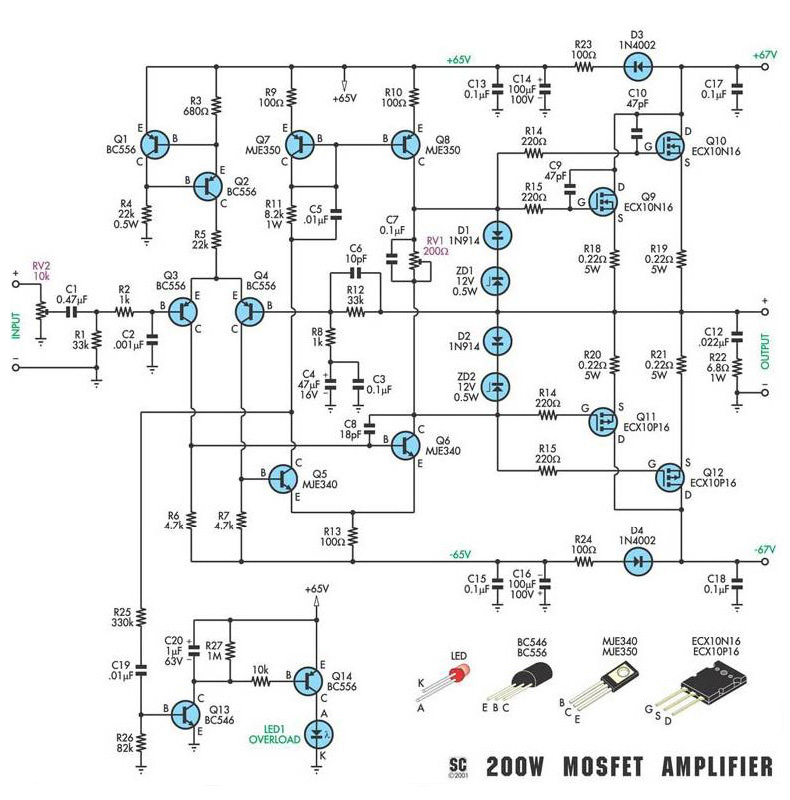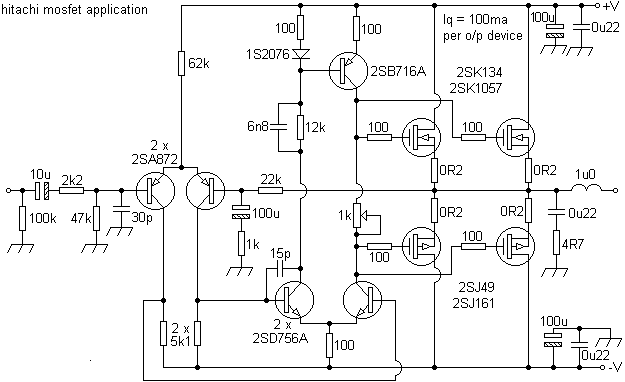When I was heavily into DIY I built several amplifiers based on the Hitachi circuit and to me they all sounded a bit flat and had pretty average damping factors. On the test bench they also seemed to object to highly reactive loads by increasing distortion. The Drivers (and pre-drivers) used by ARCAM should buffer the VAS stage nicely from the high currents in the output stage and protect against most of that load based distortion.
SELF explains this very nicely in some of his texts on amplifier design.
Unfortunately SELF wasn't writing about amplifier design in my DIY-ing days and I just don't have his intellect and knowledge.
LPSpinner.
EDIT
PS: when I think back about the circuits I used, they were a fully complementary source follower output stage not dissimilar to the one listed below: This circuit uses a 220 Ohm resistor to help isolate the VAS stage from the large currents in the output stage.
To try and get around the average damping factor and increased distortion into low impedance / reactive loads, I just paralleled the output devices. My final design iteration had 4 power MOSFETS per rail (8 per channel) and I still wasnt happy. All I really needed to do was to insert a driver transistor between the VAS stage and the output MOSFETS, this probably would have solved everything. Also the DC servo around the NFB loop like the ARCAM uses would have helped the low frequency distortion quite a bit as well.
Its also interesting to note that Silicon Chip magazine who published this design no longer use MOSFETS in their amplifier designs any more, they seem to have adopted the new SAP series of bipolar transistors that have the built in thermal tracking diodes. They also seem to have adopted most of SELF's ideas about amplifier designs such as current source on the input pair as well as current mirrors in the tails, a buffer on the VAS stage and use a "two pole" miller effect capacitor to push the local feed back corner frequency around the VAS as high as possible so as to get the most effectiveness out of the NFB loop. One day I'll have to get motivated and have a go at building one of the 200 watt versions, they look quite impressive on paper.
LPSpinner.



